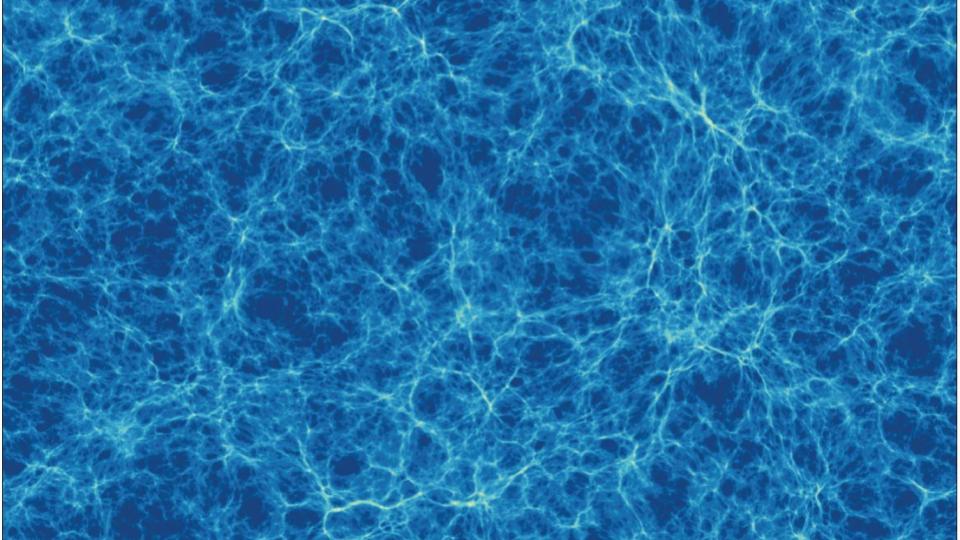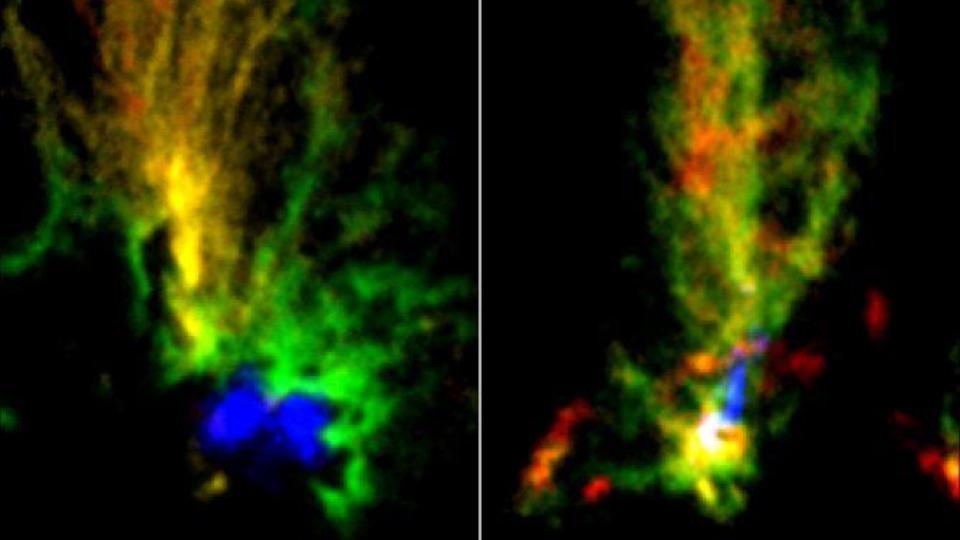Today is a day when our science is all about alignments, on both the largest and smaller scales of our Universe. One of the basic rules of cosmology, the cosmological principle, is that at the largest scales our universe is homogeneous and isotropic, which is to say it’s made of the same stuff and that stuff is oriented such that the universe looks the same from all directions.

- Spin doctors: Astrophysicists find when galaxies rotate, size matters (Science in Public)
One of the trickster-y things about cosmology is we live in the universe we’re trying to study, and from our perspective, the universe has large scale structure which appears as a lacy filaments like a Swiss cheese of galaxies. In looking at these create patterns of material, new research has sought to understand how galaxies do and don’t align with the large scale structure. In new research from ASTRO 3D collaboration, astronomers have used the Anglo-Australian Telescope to study directly measure these galactic alignments. Surprisingly, they found that galaxies of different sizes align in different ways with these filaments. Looking at 1,418 galaxies they found that the small galaxies rotate such that their motion aligns with the filament, while larger galaxies rotate at a right angle.
This sounds weird, but oddly, it’s just a straightforward kinematics problem. Galaxies form in 2 ways. A few, rare giants formed in the early universe through the massive and turbulent collapse of large clouds of material. The majority of the galaxies, however, have formed through the build up small galaxies into progressively larger and larger systems.
In galactic filaments, material typically flows in along the filaments, but in these dense environments, collisions are common, and the combination of forward motion, and gravitationally locking together, can set the system flipping sideways. In the press release, they use the analogy of two roller skaters locking together with different initial velocities, saying “If you [hands] while you are still moving faster, you will both start rotating on a vertical axis – a spin perpendicular to your horizontal path.” This is a simple case of conserving angular and linear momentum in systems in motion. This isn’t just theoretical – this was measured, and this is a really cool new way to see our universe as a system or orderly structures.

From mirrored galaxy rotations at the largest scales, we now scale down our field of view and zoom in on star forming regions in the nearby large and small magellanic clouds – two small and irregular galaxies visible to the southern hemisphere. Looking at these systems, it’s easy to see how our Milky Way is tearing at these galaxies and stripping off material as both galaxies fly past us. What is harder to see is how these two galaxies have had their own past violent collision. In new observations taken with the Atacama Large Millimeter Array, astronomers have studied two triangular regions of dust and gas rich in star formation. These molecular clouds are home to massive young stars that can only live for a few hundred million years, and the fact that both regions have stars of the same kind implies that they are the same age. These systems are located about 150 ly apart and the odds of two systems the same age are quite low, and in a new paper in the Astrophysical Journal, team members suggest these two systems are the result of a violent close encounter between the Large and Small Magellanic Clouds.
These observations also point to collisions as being a trigger for formation of the largest stars – those that are 10 or more solar masses in size. In this case, a vast clouds of gas and dust can get rapidly compressed, causing it to fragment into small volumes filled with large masses that form big stars in ways that we don’t see resulting from more gradual collapse and fragmentation.
More and more, it’s becoming apparent that it is out of the violent merger and near collision of systems that everything from galaxies to globular clusters to massive stars can result, showcasing that the universe is a dangerous place, but that it’s always working to form something new.

Coming back closer to home, our final story takes us out to the planet Neptune, and takes a look at the small moons Thalassa and Naiad. Each of these worlds is about 100km in length and is more egg or tic tac shaped then our own round moon. They have very similar orbits, with periods of just 7 and 7.5 hours, and these orbits are tilted such that they could end up aligned with one another and Uranus, just 1,150 mi apart… but they don’t ever actually align thanks to an orbital resonance. It turns out, the way their orbits are tilted causes Naiad to always be either North or South of Thalassa, keeping them 2,200 miles apart, and out of alignment with Neptune. This particular resonance allows their orbits to be stable. This beautiful over and under resonance was discovered by a team lead by Marina Mrozovic using the Hubble Space Telescope, and is thought to be a result of the chaos created when Neptune gravitationally captured Triton, an icy body larger than Pluto that once would have been among the largest if not the largest Kuiper Belt Object. When it was captured by Neptune, the wild interactions likely produced Neptune’s rings and moved its other moons into new orbits, including this resonance.
You can check out an animation of these orbits on our website, dailyspace.org.
——————–
That rounds out our show for today.
Thank you all for listening. The Daily Space is produced by Susie Murph, and is a product of the Planetary Science Institute, a 501(c)3 non profit dedicated to exploring our Solar System and beyond. We are made possible through the generous contributions of people like you. If you would like to learn more, please check us out on patreon.com/cosmoquestx. During the month of November we are running a special fundraiser to support our server costs for 2020. We project costs of $1450 for all of our websites. If you would like to help us reserve our place on the internet, you can donate at streamlabs.com/cosmoquestx. Your donations are tax deductible where allowable in the world.
Each live episode of the Daily Space is archived on YouTube. If you miss an episode here on Twitch.tv, you can find it later on youtube.com/c/cosmoquest. These episodes are edited and produced by Susie Murph.
We are here thanks to the generous contributions of people like you who allow us to pay our staff a living wage. Every bit, every sub, and every dollar committed on Patreon.com/cosmoquestx really helps. If you can’t give financially, we really do understand, and there are other ways you can help our programs. Right now, the best way you can help is to get the word out. Let you friends know, share our channel to your social media, or leave a recommendation. You never know what doors you are opening.
We really wouldn’t be here without you – thank you for all that you do.


 We record most shows live, on Twitch. Follow us today to get alerts when we go live.
We record most shows live, on Twitch. Follow us today to get alerts when we go live.